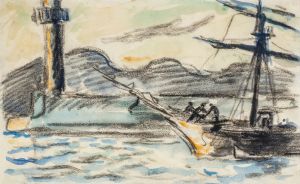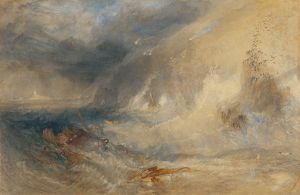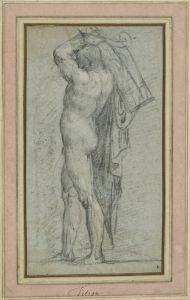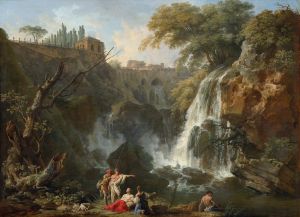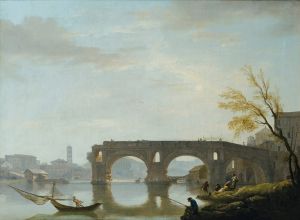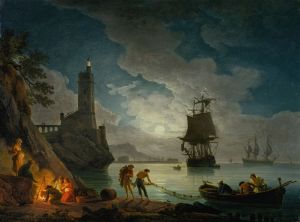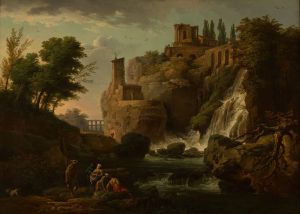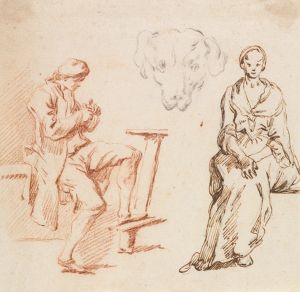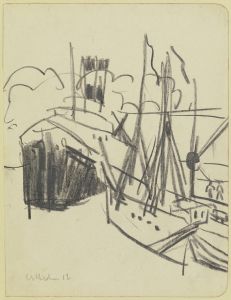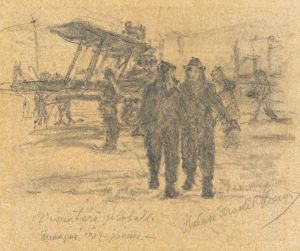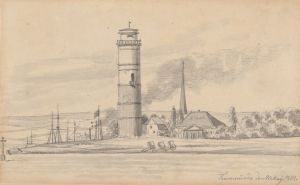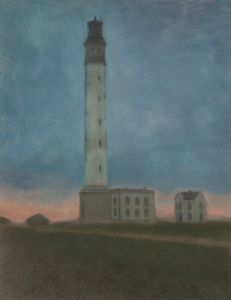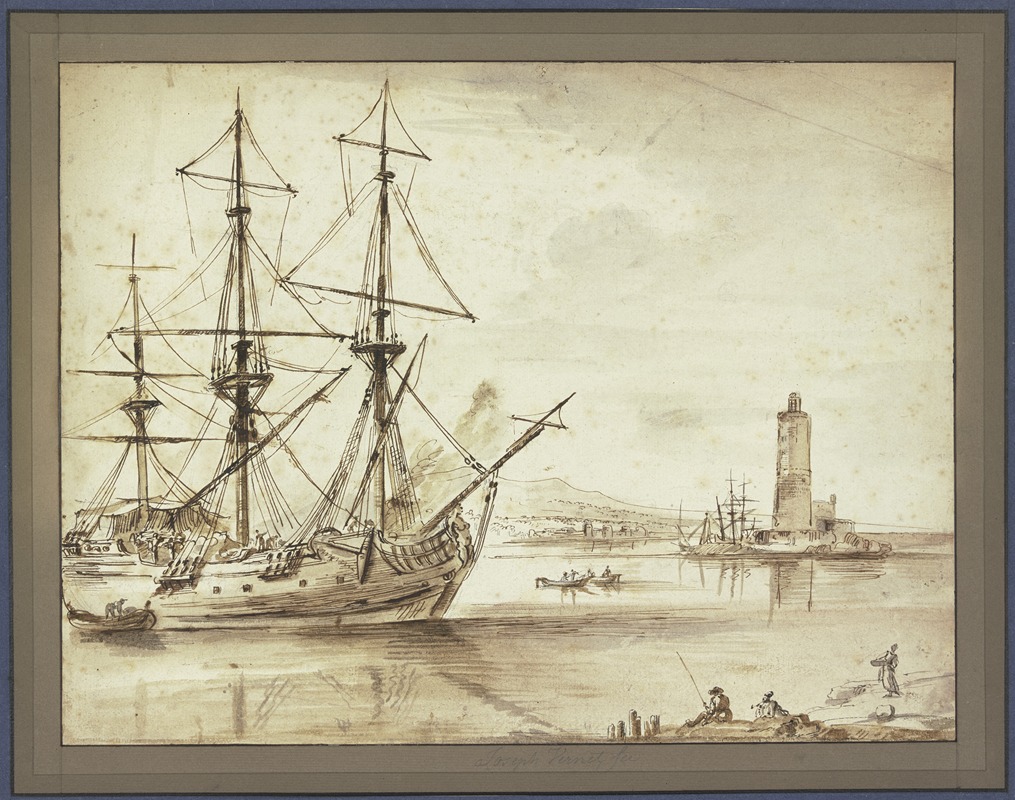
Marine, links ein Dreimaster, rechts ein Leuchtturm
A hand-painted replica of Claude-Joseph Vernet’s masterpiece Marine, links ein Dreimaster, rechts ein Leuchtturm, meticulously crafted by professional artists to capture the true essence of the original. Each piece is created with museum-quality canvas and rare mineral pigments, carefully painted by experienced artists with delicate brushstrokes and rich, layered colors to perfectly recreate the texture of the original artwork. Unlike machine-printed reproductions, this hand-painted version brings the painting to life, infused with the artist’s emotions and skill in every stroke. Whether for personal collection or home decoration, it instantly elevates the artistic atmosphere of any space.
Claude-Joseph Vernet was a prominent French painter known for his maritime scenes and landscapes, and his work "Marine, links ein Dreimaster, rechts ein Leuchtturm" is a testament to his skill in capturing the drama and beauty of the sea. The title of the painting translates to "Marine, on the left a three-master, on the right a lighthouse," which succinctly describes the primary elements depicted in the artwork.
Vernet was born in Avignon in 1714 and became one of the most celebrated painters of his time, particularly renowned for his ability to depict the sea in various moods and conditions. His works often feature ships, coastlines, and atmospheric effects, reflecting his deep understanding and appreciation of maritime subjects. Vernet's paintings were highly sought after by collectors and patrons, including members of the French aristocracy and royalty.
"Marine, links ein Dreimaster, rechts ein Leuchtturm" captures a scene typical of Vernet's oeuvre, where the natural elements play a significant role in the composition. The painting features a three-masted ship, known as a "three-master," which is a type of sailing vessel with three large masts. This ship is depicted on the left side of the canvas, navigating the waters with its sails unfurled. The presence of the ship suggests themes of exploration, trade, or travel, which were common in Vernet's maritime works.
On the right side of the painting stands a lighthouse, a structure that serves as a beacon for sailors, guiding them safely to shore or warning them of dangerous areas. The inclusion of the lighthouse adds a narrative element to the painting, suggesting a story of navigation and the relationship between man and the sea. Lighthouses were crucial for maritime safety during Vernet's time, and their depiction in art often symbolizes guidance, hope, and the human endeavor to conquer the natural world.
Vernet's skillful use of light and shadow, along with his attention to detail, brings the scene to life. The sky and sea are rendered with a keen eye for atmospheric effects, capturing the changing weather conditions and the play of light on water. This ability to convey the mood and movement of the sea is a hallmark of Vernet's work and contributes to the enduring appeal of his paintings.
Throughout his career, Vernet was commissioned to create a series of paintings depicting the ports of France, known as the "Ports of France" series, which further solidified his reputation as a master of maritime art. While "Marine, links ein Dreimaster, rechts ein Leuchtturm" is not part of this series, it shares the same thematic focus and demonstrates Vernet's consistent interest in maritime subjects.
Claude-Joseph Vernet's contributions to art extend beyond his technical skill; his works capture the spirit of an era when the sea was both a source of livelihood and a symbol of adventure and discovery. "Marine, links ein Dreimaster, rechts ein Leuchtturm" is a fine example of his ability to blend narrative and natural elements, creating a scene that is both visually striking and rich in meaning.





